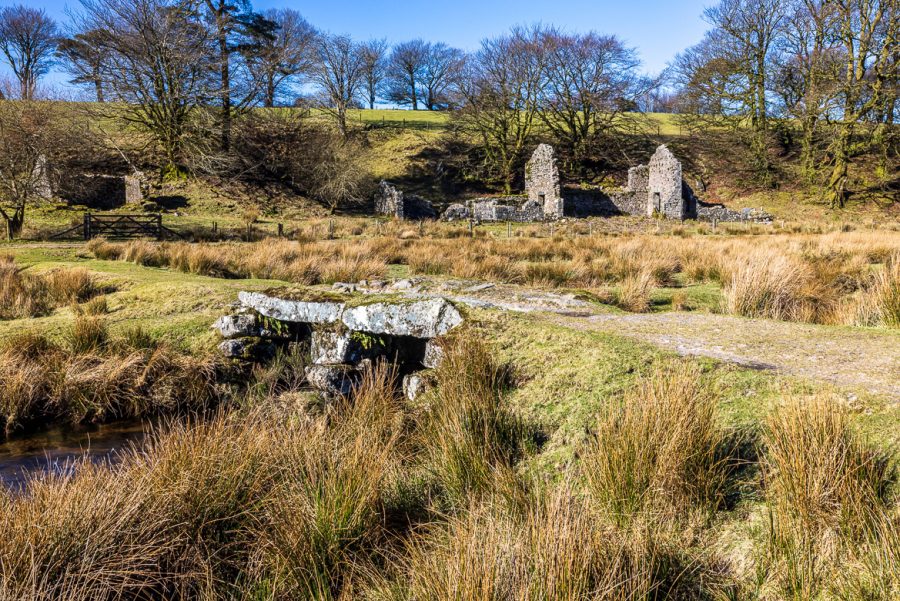
Gunpowder was used in former times for mainly two reasons: For artillery, cannons and guns and also for mining work. Production of gunpowder had to take place at isolated places, due to the risks of explosion. The different buildings needed for the production must be spread out from each other and from other living or working places. Dartmoor was therefore ideal as such a production place. From Dartmoor delivery could also easily be arranged to Plymouth, which was an important base for the Royal Navy. On Dartmoor itself a lot of mining and blasting took place in mines and quarries.
In 1844 George Frean, a wealthy alderman from Plymouth, formed the Plymouth and Dartmoor Gunpowder Company. He had a suitable remote site in the middle of Dartmoor (nowadays not far from the road between Two Bridges and Postbridge), where the nearby Cherry Brook would provide a natural power source. Water-powered manufacturing mills had been established in England already since the 16th century, so this was not a new thing. After two years of building work, production could start in 1846.


The process of manufacturing was inherently dangerous, and it was necessary to locate the different parts of the manufacturing at different buildings a safe distance from each other. Each of the buildings had very thick granite walls to protect against an explosion, but a flimsy roof that was designed to blow off in case of an accident.
Water wheels powered the presses that compressed gunpowder. The denser powder had much more explosive power. Hydro power was also needed for the corning, where the mill cake formed by the pressing was broken down into grains of different sizes.


George Frean was a good factory manager and for his time invested a lot in safety precautions for the workers. Several sources point out that none of the workers died during the time the mill operated, but I have found one source that contradicts that, so I am not quite sure.
A fellow Swede of slightly earlier origin than mine – Alfred Nobel of Nobel Prize fame – invented dynamite (in 1867), which sharply reduced the need for gunpowder. Dynamite was both safer and more efficient. The Powder Mills at Dartmoor closed in 1897 as a consequence of that and the fact that the extent of mining and quarrying on Dartmoor had been reduced in the later part of the 19th century (see my post about the Haytor Quarries).
Powder Mills is now preserved as a Scheduled Monument, and I have taken many a walk here admiring this merger of nature and past industrial architecture on the moor. Nearby are several hut circles and a cairn reminding us that people have lived here also long time ago.




